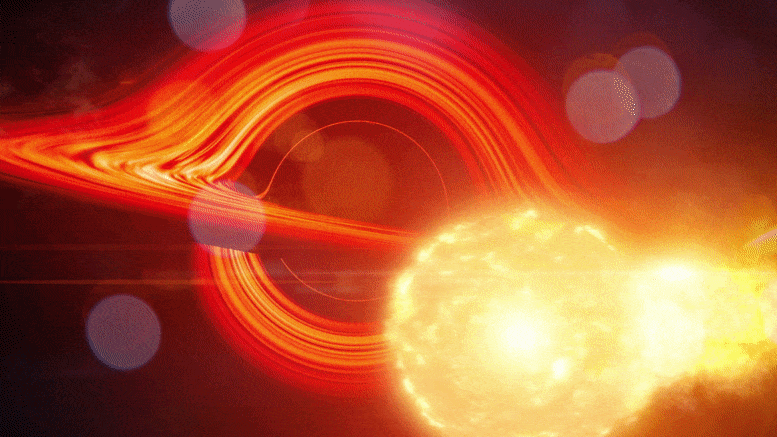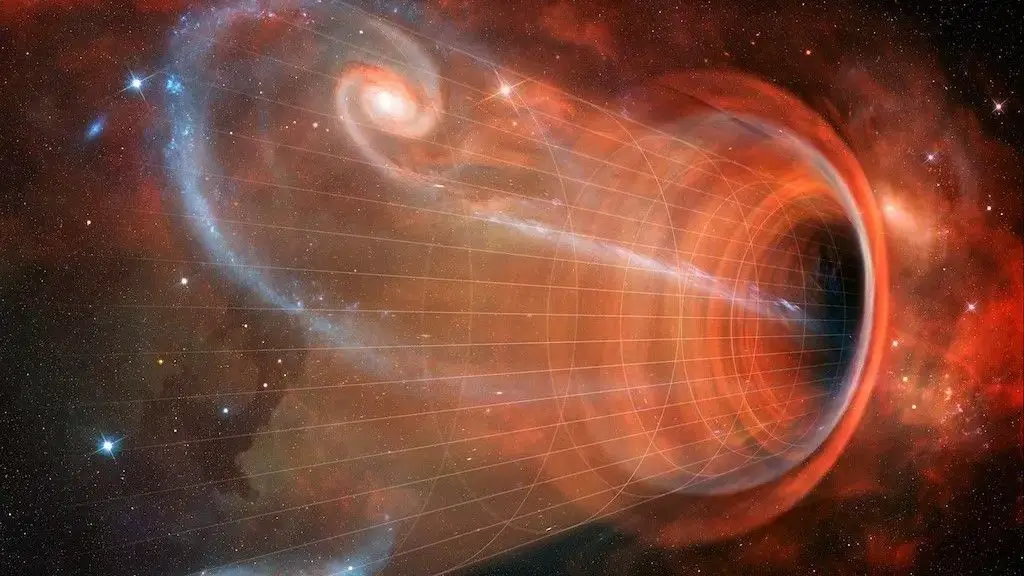Could black holes create new universes through a cosmic “Big Bounce” instead of a singularity?
Key takeaways:
- Theoretical physicist Nikodem Poplawski’s theory suggests that black holes might not contain singularities but could instead be pathways into other universes, potentially explaining how our universe was created.
- Poplawski’s theory introduces “torsion,” a force that may prevent singularities by acting as a repulsive gravitational force at extremely large densities, possibly explaining how black holes link to other universes via wormholes.
- According to Poplawski, the Big Bang could be reinterpreted as a “Big Bounce,” where our universe emerged from the collapse of a black hole in a parent universe, expanding through a white hole on the other side.
- This theory remains difficult to prove, but researchers believe strong gravity environments, like near classical singularities, could potentially provide observations to support or refute it.
- While some scientists remain skeptical about torsion, others, like NASA’s Nick Gorkavyi, support the idea that our universe could be inside a massive black hole, aligning with Poplawski’s broader hypothesis.
___________________

Black holes, known for swallowing everything in their path, may not end in a singularity but instead could lead to the creation of new universes. In 2010, theoretical physicist Nikodem Poplawski introduced a groundbreaking theory that suggests black holes could contain pathways, known as Einstein-Rosen bridges (or wormholes), to other universes. This theory redefines our understanding of black holes and may even explain the origin of our own universe.
A New View of Black Holes: No Singularity, Only Torsion
Poplawski’s theory challenges the traditional concept of singularities—points in black holes where matter is infinitely dense and physics breaks down. Instead, his research suggests that torsion, a force similar to gravity but repulsive in nature, could prevent the formation of a singularity. This torsion would allow matter to pass through a black hole and spill out into another universe via a white hole, the theoretical opposite of a black hole.
The key concept of Poplawski’s theory is that at extreme densities, torsion acts like a gravitational force that repels matter, preventing it from collapsing into a singularity. This could create a cosmic tunnel system where black holes in one universe lead to the formation of entirely new ones. In this model, Poplawski suggests that our universe may have been born from such a process, a variation on the Big Bang theory known as the “Big Bounce.”
Theoretical, But Intriguing Possibilities
While Poplawski’s theory is difficult to prove, it offers a fascinating explanation for the creation of the universe. He theorizes that when the parent universe of a black hole collapses, torsion prevents a singularity from forming, instead generating new space and causing the formation of a new universe. This new universe would expand, just as ours has, following what we know as the Big Bang. Poplawski’s theory goes a step further by suggesting that the Big Bang might have been the result of matter passing through a black hole in a previous universe.
Though compelling, the theory is still highly speculative. As Dejan Stojkovic, a cosmologist at the University of Buffalo, points out, torsion has yet to be observed in the universe, and scientists have not yet found concrete evidence that requires torsion’s existence. However, torsion might only reveal itself in regions with extremely strong gravitational fields, like those near black holes.
Other scientists, like NASA researcher Nick Gorkavyi, support the idea that our universe could exist inside a black hole. Gorkavyi believes Poplawski’s model is significant because it revives interest in the theoretical construction of universes within black holes.
Future Prospects for Proving the Theory
Poplawski remains optimistic that his theory might one day be proven through further investigation into cosmic background radiation or the study of whether the universe is closed—meaning it has no edges and curves back on itself. Though difficult to prove, this theory continues to inspire curiosity and could revolutionize our understanding of the cosmos.
For now, the idea remains a tantalizing possibility: black holes may not be the ultimate dead ends of the universe, but rather cosmic doorways to the creation of new worlds.




